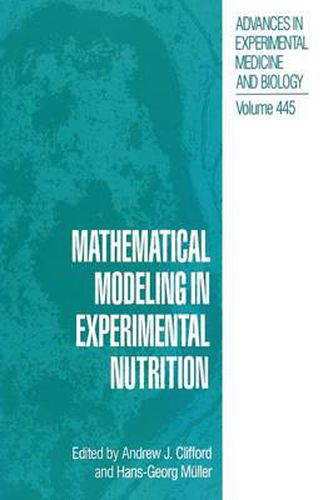Readings Newsletter
Become a Readings Member to make your shopping experience even easier.
Sign in or sign up for free!
You’re not far away from qualifying for FREE standard shipping within Australia
You’ve qualified for FREE standard shipping within Australia
The cart is loading…






This title is printed to order. This book may have been self-published. If so, we cannot guarantee the quality of the content. In the main most books will have gone through the editing process however some may not. We therefore suggest that you be aware of this before ordering this book. If in doubt check either the author or publisher’s details as we are unable to accept any returns unless they are faulty. Please contact us if you have any questions.
Nutrients have been recognized as essential for maximum growth, successful reproduction, and infection prevention since the 1940s; since that time, the lion’s share of nutrient research has focused on defining their role in these processes. Around 1990, however, a major shift began in the way that researchers viewed some nutrients particularly the vitamins. This shift was motivated by the discovery that modest declines in vitamin nutritional status are associated with an increased risk of ill-health and disease (such as neural tube defects, heart disease, and cancer), especially in those populations or individuals who are genetically predisposed. In an effort to expand upon this new understanding of nutrient action, nutritionists are increasingly turning their focus to the mathematical modeling of nutrient kinetic data. The availability of suitably-tagged (isotope) nutrients (such as B-carotene, vitamin A, folate, among others), sensitive analytical methods to trace them in humans (mass spectrometry and accelerator mass spectrometry), and powerful software (capable of solving and manipulating differential equations efficiently and accurately), has allowed researchers to construct mathematical models aimed at characterizing the dynamic and kinetic behavior of key nutrients in vivo in humans at an unparalleled level of detail.
$9.00 standard shipping within Australia
FREE standard shipping within Australia for orders over $100.00
Express & International shipping calculated at checkout
This title is printed to order. This book may have been self-published. If so, we cannot guarantee the quality of the content. In the main most books will have gone through the editing process however some may not. We therefore suggest that you be aware of this before ordering this book. If in doubt check either the author or publisher’s details as we are unable to accept any returns unless they are faulty. Please contact us if you have any questions.
Nutrients have been recognized as essential for maximum growth, successful reproduction, and infection prevention since the 1940s; since that time, the lion’s share of nutrient research has focused on defining their role in these processes. Around 1990, however, a major shift began in the way that researchers viewed some nutrients particularly the vitamins. This shift was motivated by the discovery that modest declines in vitamin nutritional status are associated with an increased risk of ill-health and disease (such as neural tube defects, heart disease, and cancer), especially in those populations or individuals who are genetically predisposed. In an effort to expand upon this new understanding of nutrient action, nutritionists are increasingly turning their focus to the mathematical modeling of nutrient kinetic data. The availability of suitably-tagged (isotope) nutrients (such as B-carotene, vitamin A, folate, among others), sensitive analytical methods to trace them in humans (mass spectrometry and accelerator mass spectrometry), and powerful software (capable of solving and manipulating differential equations efficiently and accurately), has allowed researchers to construct mathematical models aimed at characterizing the dynamic and kinetic behavior of key nutrients in vivo in humans at an unparalleled level of detail.